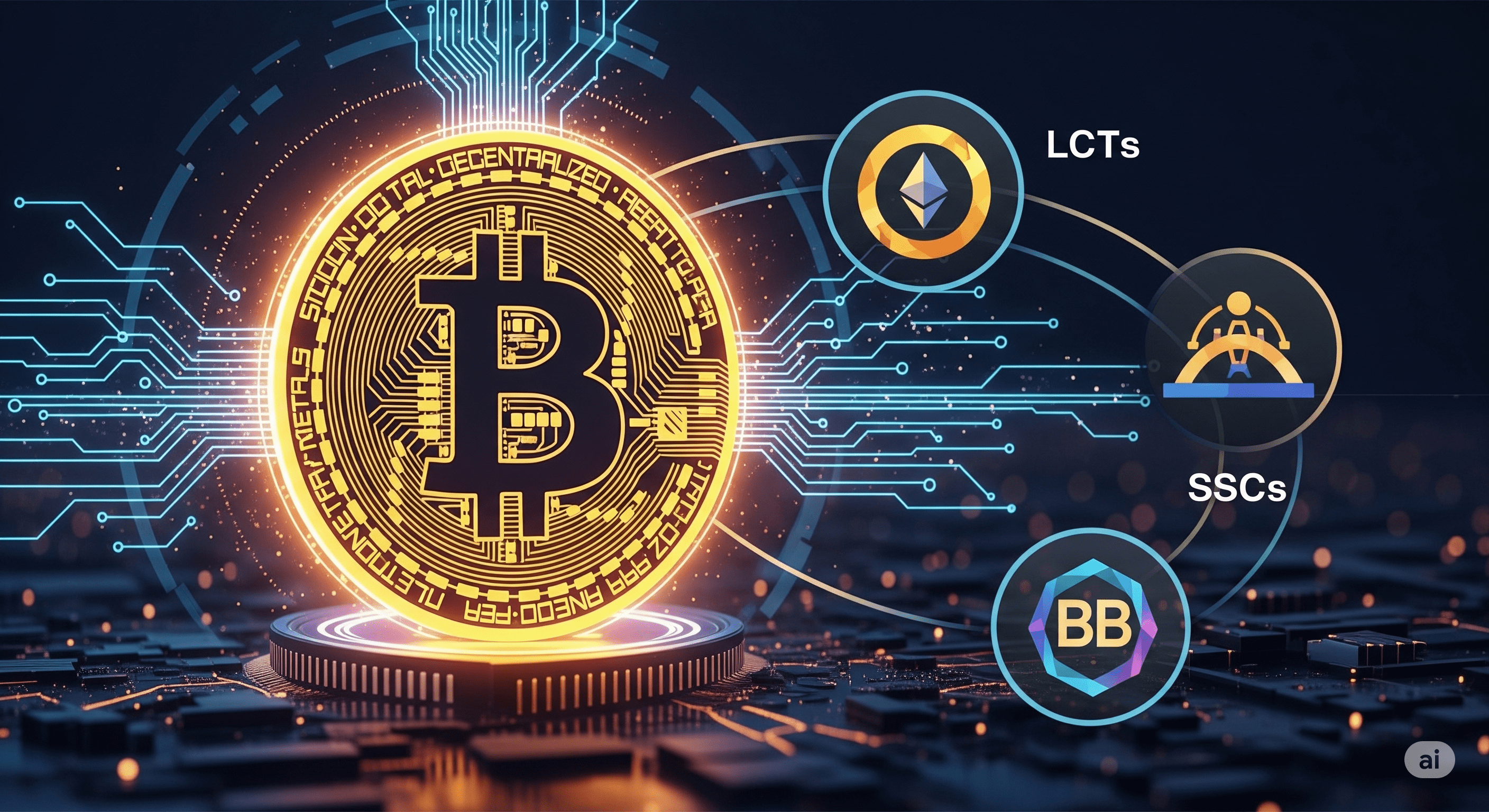In the design of BounceBit, three components interlock: LCT (Liquid Custody Token) brings custody assets 'on-chain', SSCs (Shared Security Clients) digest the security of re-staking, while BB tokens act as the 'glue' for network operation and incentives. Understanding the relationship among these three essentially reveals how BounceBit transforms idle BTC and stablecoins into security and yield.
1) LCT is the funding entry: converting custodial assets into combinable on-chain certificates.
LCT is an on-chain token minted at a 1:1 ratio after users deposit assets into compliant custody. Typical examples:
BBTC: corresponding to user-custodied BTC, circulating equivalently on the BounceBit chain, available for staking/re-staking and DeFi.
BBUSD: unifying multi-chain stablecoins into an on-chain universal stablecoin form, facilitating circulation and pricing within the ecosystem.
The key to this type of LCT is **'assets in custody, liquidity on-chain'**: what users receive are freely combinable on-chain certificates while retaining the right to redeem at any time at a 1:1 ratio (returning LCT to withdraw custodial assets).
2) From LCT to network security: Staking → LSD → re-staking
When LCT (such as BBTC) enters the BounceBit chain, users have two main usage lines:
1. Delegate to validators to participate in PoS: obtain LSD (Liquid Staking Derivative), such as stBBTC, while maintaining liquidity. Subsequently, LSD can be used for re-staking or participating in DeFi.
2. Directly re-stake to SSCs: 'renting out' your security to specific infrastructure (see next section).
This step establishes a mapping of 'funds → security': your BBTC / stBBTC are not just assets, but consumable security resources. Messari's technical overview also clarifies: BounceBit's consensus and re-staking system allows the distribution of security between BB and BBTC to various SSCs (oracles, cross-chain bridges, sidechains, etc.).
3) SSCs are 'consumers of security': integrating re-staked security into real infrastructure
SSCs (Shared Security Clients) refer to infrastructure components that 'consume' these re-staked securities, including:
Oracle networks, cross-chain bridges, data availability layers, fast finality layers, Keeper networks, dedicated virtual machines, etc.
They integrate the re-staked security of BTC/BB into their operations through BounceBit, thus enhancing resilience against malfeasance and reliability.
For users, re-staking LSD/LCT to different SSCs:
Can exchange for corresponding incentives (determined by specific SSC);
At the same time, it bears corresponding constraints (for example, performance/malfeasance related reduction rules, depending on client and protocol settings).
This transforms 'originally idle BTC and stablecoins' into 'valuable network security', while the diversity of SSCs ensures that the 'demand side' for security is sufficiently broad, thus providing holders with richer yields and scenarios.
4) BB tokens act as the 'glue' for network operation and incentives.
BB is BounceBit's native token:
Consensus and security: validators can simultaneously stake BB and/or BBTC to participate in dual-token PoS; rewards are settled and distributed in BB according to Epoch between validators and delegators.
Network usage: Gas payment unit, governance voting, and ecological universal pricing/incentive medium.
This means:
Supply side: BB and BBTC jointly provide basic security for L1;
Demand side: SSCs consume these re-staked securities;
Settlement layer: network-native yields and fees are connected via BB (PoS rewards, Gas, governance, and ecological incentives).
5) Connecting the three: a 'security and yield' journey of a fund (example)
1. Deposit BTC → mint BBTC (LCT), achieving 'in custody, available on-chain'.
2. Stake BBTC → obtain stBBTC (LSD);
3. Re-staking stBBTC to a specific SSC (such as an oracle or bridge) → providing security for it and obtaining incentives from that SSC;
4. At the same time, the whole network's PoS rewards are settled in BB, and your economic activities use BB as Gas, governance, and ecological interactions.
5. When needing to exit, return BBTC to redeem the original BTC at a 1:1 ratio (in non-advanced strategy scenarios).
> Intuitive understanding:
LCT is 'funding entry and certificate', SSCs are 'security consumption and scenarios', and BB ties together the network's security, fees, rewards, and governance.
6) Why use 'dual-token PoS (BB + BBTC)'?
Broader sources of security: incorporating Bitcoin's deep liquidity and lower volatility into consensus, reducing vulnerability from reliance solely on new chain tokens.
Better participation aspect: supporting both native users holding BB and users holding BTC to 'participate in security and yield with BBTC'.
7) Yield and risk profile (for participants)
Potential yields
PoS dimension: validator/delegator rewards, priced in BB.
Re-staking dimension: incentives of different SSCs (depending on each client's economic model).
DeFi dimension: additional uses of LCT/LSD in DeFi (liquidity, lending, strategies, etc.).
Potential risks
F Custody and redemption: the custody and procedural rules behind LCT; redemption must match 1:1 and follow waiting/procedural constraints.
Protocol/contracts: risks of PoS and re-staking contracts, client performance risks, and possible reduction clauses (varying by SSC).
8) Key points quick reference
LCT: converting custodial assets 1:1 into on-chain combinable certificates (e.g., BBTC, BBUSD), retaining redemption rights and obtaining on-chain liquidity.
SSCs: a collective term for oracles, bridges, DA layers, fast finality layers, etc., which form the 'demand side' for re-staking security, paying incentives to users lending security.
BB token: one pole of dual-token PoS, Gas/governance and incentive unit, connecting funds, security, and economic activities into a closed loop.
#BounceBitPrime @BounceBit $BB


